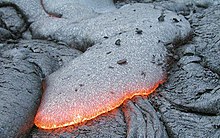STEM Biology
 Biology at the Out-Door-Academy. Please no trolling | |
| Chapters | |
|---|---|
| --The pseudonym Locke (discuss • contribs) 19:03, 1 October 2014 (UTC) | |
| 1.1-present | |
| Subjects | |
| School Incorporation Status | Independent |
| Out-of-Door Academy Science Department | |
| Completion status: Been started, but most of the work is still to be done. |
| Type classification: this is an article resource. |
| Subject classification: this is a biology resource. |
STEM Biology Florida, is a nationwide program in the United States , that stands for Science, Technology, Engineering, and Media. It has now been nationally recognized as a nation high school standard of science, to help supplement and advance the previous science programs in the United States. One of STEM's major contributors is American aerospace program NASA.
STEM Biology also uses the standard scientific method.
Scientific Method and the OADAC
[edit | edit source]Know these rules by heart to help you on tests, lab write-ups, social conflicts, etc. to anything that can float your boat... ( I know, I hate to abbreviate, too.)
1. Observe
2. Ask
3. Design an Experiment
4. Analyze the Data
5. Conclude from the Data
BIOLOGY Chapters 1.1-2.2
[edit | edit source]As a definition, Biology, is better known as bio, meaning life, and "ology", meaning the study of. Currently, there are six known characteristics of life known as:
1. All living things contain cellular life.
2. All living things obtain energy from heterotrophs or autotrophs.
3. All living things adapt to changes in the environment.
4. All living things grow and develop.
5. All living things sexually reproduce or asexually reproduce.
6. All living things maintain stable conditions, known as homeostasis.
As had by most terminology, "homeo" means one direction or straight, (don't laugh), and stasis means the "stimulation", which means "homeostasis" is the natural "stimulation" that an organism has to its surrounding environment. Inside of these enzymes, we have activation sites that allow for the enzymes to help breakdown certain molecules in the digestive system. For example, a lactate is an example of enzyme that breaks down lactose molecules.
In "homeostasis", an organism can achieve this natural stimulation by having ready and active enzymes ready to start and excel the process of biochemical reactions by bonding the molecules in a specific syntax in the activation sites that are found for every molecule and enzyme.
Introduction into Basic Chemistry
[edit | edit source]There are three different types of bonds. First is hydrogen, covalent, and ionic bonds, which all have electron attractions between the two different atoms.
